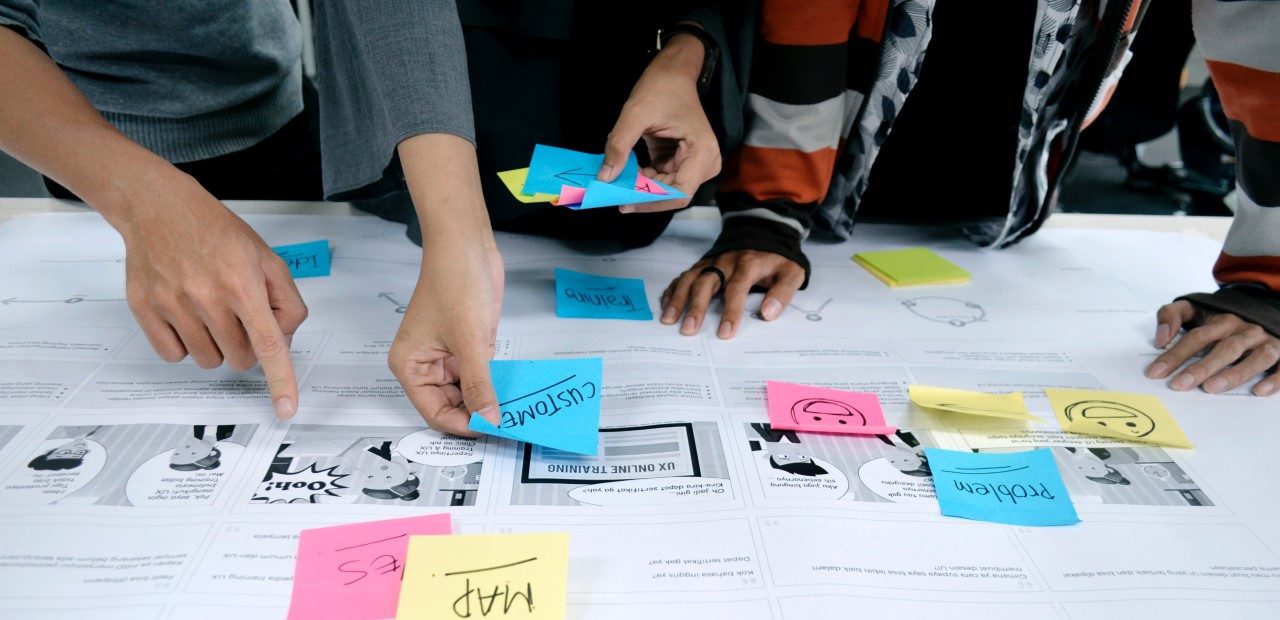You may have heard the old business adage: a happy customer tells a friend; an unhappy customer tells the world.
The problem is, in today’s social media-obsessed world where keyboard warriors are eager to pounce on any company (or person) that missteps, the world can be told in a click of a button. By that point, it is very hard to control the narrative.
Customer experience (CX) encompasses every interaction a customer has with you. It is a customer-centric view of your brand, focusing on their relationship with you as a business.
There’s plenty of evidence that great CX increases customer satisfaction and loyalty and drives positive word-of-mouth through reviews and recommendations.
It can have a tangible impact on your brand’s reputation and provide a competitive edge by making you stand out among the competition.
It might sound obvious, but to create a great CX you must be customer centric in the way you behave as a business. Customer centricity is about placing the customer at the heart of everything you do. It’s about making things seamless at all points across the customer journey.
I once worked in an office where they installed blinds to minimise the glare hitting the windows at certain times of the day.
In theory, it was a great initiative. However, the blinds were centrally controlled, which meant we couldn’t put them up or down at our leisure.
Every day at about 3:30pm, I watched members of the team seated by the lovely big window struggle to see their laptop screen and become increasingly frustrated that they couldn’t close the blinds that had so helpfully been installed to prevent this very problem.
I asked building management if we could have the blinds set to close at a fixed time but was told that unfortunately, this wasn’t possible because the sun hit the various offices at different times throughout the day. The blinds had to be manually closed by reception.
Their solution? Each time we wanted the blinds down, we could email reception a blank email with the subject line: “blinds”.
Once received, they’d pop them down for us. Sure, they were solving the problem. But it wasn’t our problem they were solving – it was theirs.
The solution was at best annoying and at worst showed a total disregard for the customer, the leaseholder paying a handsome premium for a CBD office space. You might not be surprised to learn that we didn’t renew the lease.
So, what is the key to creating great customer experiences? There are numerous things you can do, many of them at little cost, to improve CX in your business.
1. Ask for feedback – John Hughes, one of WA’s most successful business owners, still walks the floor daily talking to customers. Having heard him speak at business events a number of times now, ‘know your customers’ seems to be one of John’s mantras and no doubt a key factor behind his success. As a market researcher, I’m a strong advocate for the power of feedback loops. Whether it’s a satisfaction survey, focus groups or even a feedback form on your website, make sure you’re listening to your customers to identify their pain points. Better yet, test products and services with them before you take them to market. Talk to your customer-facing staff too, they’re your eyes and ears on the ground.
2. Make it personal – Customisation is king. No one wants to feel like they’re just a number. If you have ever received an email from a company “Hi first name”, you’ll know what I mean. Personalise your communications in all one-on-one interactions. Wherever possible, provide an option for customers to tell you how and when they’d like to engage. Do they prefer email or telephone contact? What products and services best suit their needs? In fact, you may not even need to ask the latter. See point 3 below.
3. Use data and analytics – You can mine a lot of information about your customers if you’ve set up your data capture in a way that allows for this. Mining and analysing your internal data sets can tell you a lot about customers’ purchase behaviour, product or service preferences and even upsell or cross-sell opportunities. The key to leveraging the information you have is to ensure you are capturing and storing it in a way that’s useful to the business. So often, we’re brought in to assist organisations make use of data to achieve an outcome that hadn’t been considered when their data capture processes were set up. This is like tying your shoelaces with one hand behind your back – it’s possible, but you’ll get a sub-optimal result. Taking the time upfront to create a data strategy that considers what you need to know about your customers and why will save you time down the track and give you more flexibility over what you can do with the information you collect.
4. Develop a strong EVP – You could be forgiven for focusing exclusively on your customers when trying to improve your CX. But don’t forget one of the most powerful resources you have at your disposal is the people who work for you. Empowered, engaged employees have greater job satisfaction and their happiness in turn drives the culture of your organisation. A strong employee value proposition (EVP) that clearly articulates your purpose for being flows through to the experience the customer has when they interact with frontline staff.
5. Understand the customer journey – Undertaking customer journey mapping can be a great way to identify where the opportunities lie to improve your CX. A customer journey map is a visual or graphic representation of the key interactions customers have with the organisation, from before they become a customer right through to when they (potentially) leave. A journey map allows you to identify pain points, high volume interactions, moments of truth (ie. positive interactions that leave a lasting impression), brand, product and service touchpoints and any roadblocks – aspects of the journey that are difficult or could be simplified. It also provides a view of how long they spend in each key stage, what they’re feeling throughout the stages, and where the interactions are taking place (eg website, native app, call centre, in-store).
These are just a few considerations, but there are many more ways to achieve CX gains – from creating omnichannel experiences through to apps and new technologies that generate breakthrough experiences.
Importantly, great CX is key to customer retention and growth. Get it right and it will likely improve your brand reputation, reduce churn and increase profitability.

